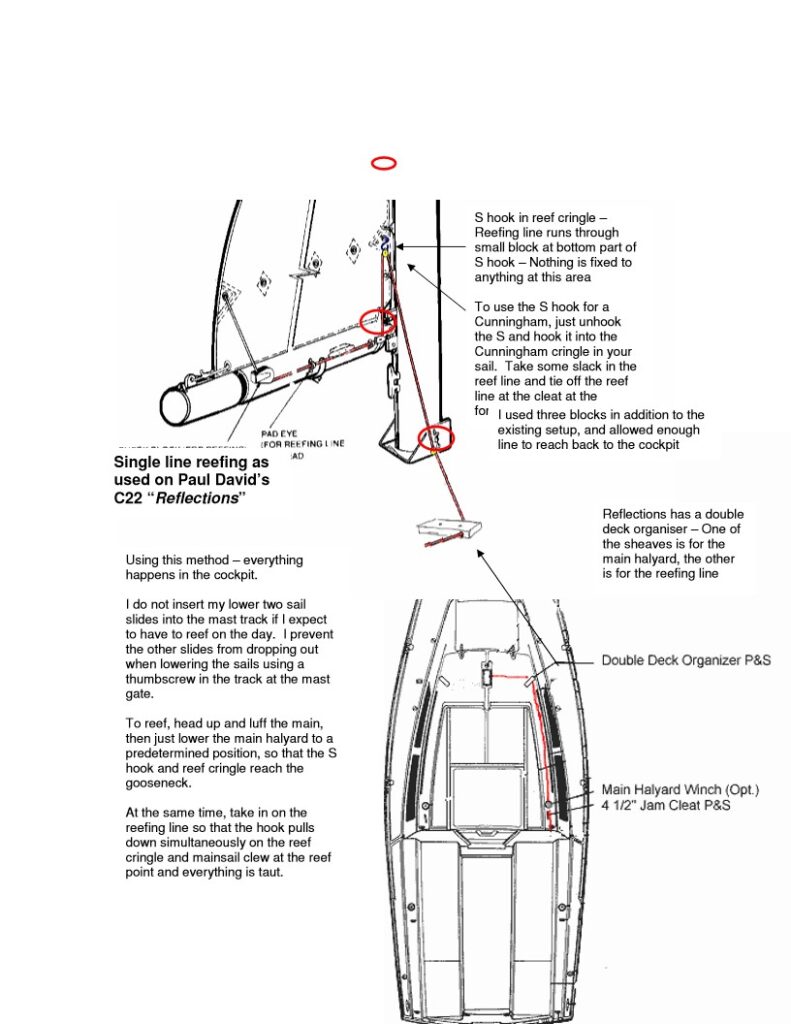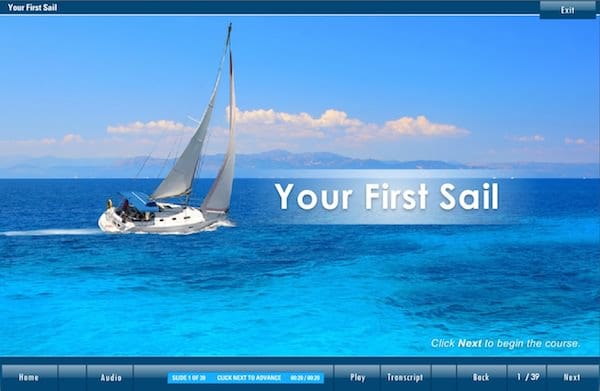| Area | Details |
|---|---|
| Bow Area |
|
| Hull and Deck |
|
| Cockpit |
|
| Safety Equipment |
|
| Navigation and Communication |
|
| Engine and Propulsion |
|
| Emergency Procedures |
|
| Local Rules and Regulations |
|
Category: learn to sail
The Mainsail Cunnningham on a Sailboat
On The Water Boat Kit
Single Line Reefing as Used on Paul Davids’s C22 “Reflections”

Free Online Sailing Course
Welcome to Your First Sail, the American Sailing Association’s short, fun, online sailing course designed to familiarize you with the world of sailing, one that some see as a sport and others choose as a lifestyle.
Q: Who should take this online sailing course?
A: If any one of the following describes you, this course is for you!
- I have never been sailing.
- I’ve been sailing a couple of times as someone’s guest, but I couldn’t tell you the difference between a close tack and a broad reach.
- I’m not interested in taking a sailing class at this time, but I would like to know enough to be helpful on a sailboat.
- I’ve enrolled in a basic sailing class, but I’d like to get a solid head start before my first on-the-water lesson.
After completing this course, you’ll understand how a sailboat works, the common commands used to steer one and some basic sailing terminology. You’ll not only get the most out of your time on the water, but also be able to actively participate in the magic of sailing!
Q: How long will it take to complete the online sailing course?
A: Anywhere from about 30 to 45 minutes.
A: Anywhere from about 30 to 45 minutes.
Q: Do I need any books or other study materials?
A: No, the course is fully self-contained. You can start the course at any time and do some or all of it at a time.
A: No, the course is fully self-contained. You can start the course at any time and do some or all of it at a time.
https://asa.com/online-sailing-course/
No Events are found.

